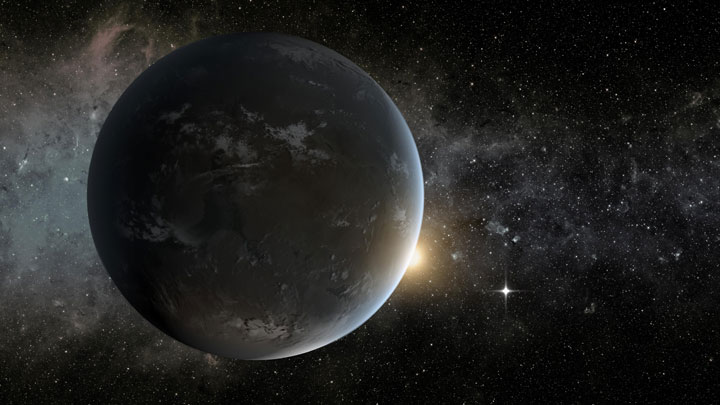TORONTO – If you’ve ever wanted to be a scientist but life took you on a different career path, your dream isn’t over.

Around the world, thousands of people have made contributions to science from discovering potential planets, counting sunspots, measuring the darkness of the night sky, understanding whale calls, classifying tropical cyclones and more.
It’s called citizen science and it’s something that’s gained popularity over the past few years.
READ MORE: Another Earth? Astronomers spot most Earth-like planet yet
What is it?
These types of projects involve the everyday person – no scientific background involved. Most often it’s analyzing images or patterns – it’s quick and it’s easy, and you can do it on your own time, likely the reason for the increased popularity.
One organization that has several citizen science projects is Zooniverse. It offers projects ranging from space to climate to humanities.
“It started with one project, Galaxy Zoo. We were interested in the problem of how we ended up with a mix of galaxies that we have around us in the universe today,” said Zooniverse director Chris Lintott. “And if you want to understand that, you need to understand what shape the galaxies are.”
Lintott said that he and his team quickly realized that it was a fairly easy task: human beings could tell the difference between shapes – whether it was elliptical or a circle with a bar in the centre, for example. And it turns out, humans are better at it than computers.
“This didn’t use to be a problem, except that modern astronomical surveys produce millions of images,” Lintott said. After a graduate student looked at 50,000 images, he and his team realized that this was the way to go.
READ MORE: There are billions of Earth-like, just-right planets out there, study says
Lintott and his team quickly put up a website, Galaxy Zoo, and were surprised at the response it received.
“This idea of contributing to something and to be able to spare a few minutes to do some science, turned out to be really popular,” Lintott said.
Lintott said that soon enough other scientists were contacting him.
“They kind of said, ‘You know your people who want to look at galaxies, do you think they’d also want to look at my data?’ And so we realized that this was something we could do for all sorts of things.”
One of the most successful of the projects is Planet Hunters. This was a surprise to Lintott.
“The idea that people will look at graphs for fun, which is essentially what we’re asking people to do…really speaks to this idea that people are taking part in these projects because they want to contribute to science, not because they’re enjoying browsing images.”
That project – Planet Hunters – resulted in the discovery of the first planet in a four-star system.
And the fun part is that if you do help with a discovery, you get your name on the discovery announcement.
READ MORE: Habitable planets – Is E.T. out there?
“I think that just being able to tell people, that just a few moments of time that they spared has lead to the discovery of something, is really exciting,” said Lintott.
But even if you don’t get into one of those announcements, Lintott was quick to point out that you’re still making a contribution: Scientists are able to get a better understanding of the subject that they’re studying.
And people shouldn’t be scared off by the idea that they’re doing real science: the data that they look at is also looked at by others in order to get a consensus. It then goes on to the scientists of the program.
Not just space
There are several projects on Zooniverse’s site, and not just in space science.
Lintott said that more than a million pages of have been catalogued in the Old Weather project that aims to transcribe ships’ logs. There’s also cataloguing whale calls, examining soldiers’ diaries from World War I, and exploring the ocean floor, to name a few.

Marc Kuchner, principal investigator for Goddard Space Flight Center’s Disk Detective project – part of Zooniverse – said that citizen science can play an important role in discoveries.
“I think it’s an underutilized resource for scientists,” he said.
But it shouldn’t be. Kuchner notes that there are 277,000 sources of images for Disk Detective and since it was launched in January, there have been more than 800,000 classifications.
“It boggles the mind,” he said.
For the Disk Detective project, astronomers can learn more about the the formation of planets, thus providing us with a better understanding of our planetary evolution. And this is something extraordinary to Kuchner.
“This is the window into the origin of our planet.”
The future of citizen science
Lintott said that there are many more projects on the way. But he doesn’t just mean just through Zooniverse. The team hopes that scientists will be able to use their tools to build their own projects.
And there are other citizen science sites available. Crowdcrafting is another one that currently has eight projects, including Dark Skies ISS, which asks people to classify images taken from the International Space Station.
Kuchner is grateful to have people interested in contributing to science, no matter what the field.
“It’s wonderful to live in an era when we can actually involve people in the joy of doing it; involving people in the process of making a scientific discovery,” he said.
“And that lights up my face every time.”




Comments